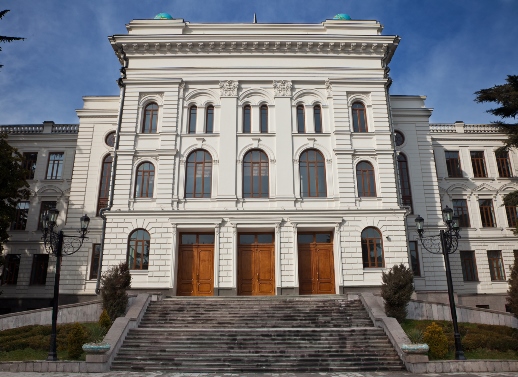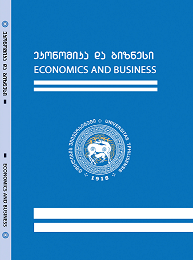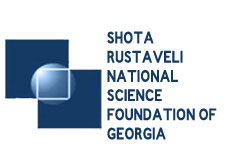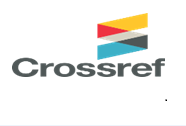
Referential and Reviewed International Scientific-Analytical Journal of Ivane Javakhishvili Tbilisi State University, Faculty of Economics and Business

Analysis of the Distribution and Use of the State Scholarship (Case of the Faculty of Economics and Business of TSU)
https://doi.org/10.56079/20223/6
The country's expenditure on education shows the level of social development of the society and the attitude of the state and society towards this process. A society with a high level of education increases highly qualified human capital and accelerates the country's development. Therefore, most countries are trying to increase their spending on education.
The main goal of the research is to study the current state of academic performance of scholarship and non-scholarship students at the Faculty of Economics and Business and to determine how qualitatively, effectively and fairly the financial resources allocated by the state for education are used and what is the motivation of scholarship students to study. The article substantiates the theoretical conclusions raised in the published work.
The article discusses the issues of funding of educational grants and scholarships by different countries. Some countries fully finance studies of state programs and provide monthly stipends. For example, Hungary, South Korea, Germany, Turkey, Great Britain and the USA. The duration of grants can be: several weeks, months, one year to 3 years, etc.
The article provides information on education expenditures in relation to GDP, both in Georgia and in European and OECD countries. In 2020, the share of resources allocated by Georgia to the education sector in relation to GDP was 4.1% and is 5% lower than the EU indicators and 4.7% lower than the average indicators of OECD countries.
According to the strategic plan for the development of education announced at the government level in 2019, from 2022, the annual expenditure on education should amount to 6% of the country's GDP. In case of realization of which, the expenditure on education in Georgia in relation to GDP would be among the average indicators of European and OECD countries. However, it is clear from the report published by the International Monetary Fund that in 2022 the Georgian government will no longer invest 6% of the gross domestic product in education, i.e. according to the document, in 2022, an amount equal to 6% of the GDP of Georgia will no longer be invested in education, which was previously the strategy "Education is a national idea" was envisaged. The reason for this, as can be seen from the report published by the International Monetary Fund, is the reduced fiscal space.
According to the 2021 budget, the funding of the Ministry of Education is 1.8 billion GEL (of which 300 million is for culture and sports, which is already a separate agency). As a whole, this financing is up to 3.4% of the GDP of Georgia, and directly in the direction of education, it is 2.8% of the GDP. In order to fulfill the parameters defined by the strategy "Education with a national idea", the budget of the Ministry of Education should be doubled in 2022 and should become 3.49 billion GEL.
In order to analyze the distribution and effective use of the state scholarship, the data of undergraduate state scholarship holders and non-grant holders (business administration and tourism programs) enrolled in 2013-2017 were selected. The students of the "Economy" program (which has program funding and the student's tuition fee is fully financed by the state - therefore all students study for free) and ISET (since the program has been operating since 2017) did not get into the target group.
The article analyzes the issues of distribution and use of the state scholarship in the case of the Ivane Javakhishvili Tbilisi State University, Faculty of Economics and Business. The statistics about the contingent, movement and academic performance of students enrolled with scholarships and non-scholarships are presented.
Only - 54.37% of the state scholarship holders enrolled at the Faculty of Economics and Business in 2013-2016 completed their bachelor's degree within the 4 years stipulated by the curriculum. For non-scholarship students, this figure is even lower and is equal to 33.49%. In 2013-2016, the number of excluded students with grants compared to the number of students with grants enrolled in the same years accounted for 8.1%. The same figure is equal to 21.01% for non-scholarship students, and 36.38% of the scholarship students enrolled in 2013-2016 "Other", which refers to students who have transferred (with external and internal mobility), excluded due to a personal statement, active (had a suspended status in the previous semester/semesters), suspended, etc. This figure is equal to 45.21% for non-scholarship students.
Quantitative and qualitative research has been conducted (210 respondents were interviewed) in the direction of effective use of the distribution of the state scholarship and raising the motivation of students to study.
The article discusses the results of the research, relevant conclusions and offers the author's recommendations, the implementation of which, according to the authors, will lead to students' interest in learning and healthy competition. With the invested investment, in a maximum of four years, personnel with a competitive higher education will be recruited, who will meet the requirements of the development of the quality of education in Georgia, as well as the recognized international norms and standards.
Key words: state training grant, distribution of training grants, effective use of training grants, higher education, motivation to study.
JEL Codes: H50, H52, I21, I22









